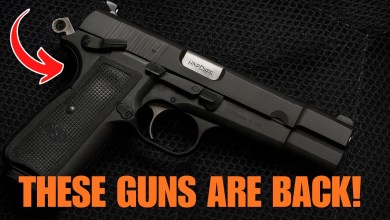The Best Knife Sharpeners of 2025

Not all knife edges are sharpened equally, but all neglected edges are pretty equally useless. So, our edge obsessives — the sorts who always regrind every factory edge to get them just right — rounded up the best knife sharpeners on the market.
Led by Ian Graber-Stiehl, a professional blade sharpener, each system sharpened a wide range of knives in testing: budget folders, chisels, professional cutlery, high-end EDC steels, axes, machetes, shears, horse clippers, saws — you name it.
We used the systems here in kitchens, in the field, and at the workshop to see not only what they sharpen best but where they’re best suited. The result: a list of the best sharpening systems, from the powerful Work Sharp Knife & Tool Sharpener MK.2 to the simple Sharp Pebble Whetstone. Check out the top picks below.
Editor’s Note: GearJunkie updated this guide to the best knife sharpeners on July 3, 2025, to dial in selections for a more hobbyist-centric crowd, and added a few new sharpeners in the process. The Wicked Edge Carbon WE40 is a stellar beginner sharpening system, while the Work Sharp Rolling Knife Sharpener offers a unique and easy rolling method for getting cutlery back in shape.
The Best Knife Sharpeners of 2025
Best Overall Knife Sharpener
9.4/10 Rating
Best Budget Knife Sharpener
6.8/10 Rating
Best Beginner Knife Sharpener
8.0/10 Rating
Best Travel Knife Sharpener
7.5/10 Rating
Best Rolling Sharpener
8.0/10 Rating
Best Field Sharpener
7.9/10 Rating
Best Professional Knife Sharpener
9.3/10 Rating
See more picks
Best Budget Knife Sharpener
-
Quality, dual-grit stone -
Silicone insert keeps the stone in place -
The price is nice -
Bamboo case stays in place on granite, marble, and rough surfaces
-
Bamboo case will move on butcher block -
Takes practice to truly master — not very approachable for beginners
Best Beginner Knife Sharpener
-
Easy-to-understand entry point to knife sharpening -
Affordable Wicked Edge quality -
Includes practice knife for honing your skills -
Compact and portable
-
Included stones may be a bit limited in grit for some -
Will require your own workstation clamps (unless you purchase the separate aluminum base)
Best Travel Knife Sharpener
-
Fast-cutting abrasive -
Compact -
Versatile -
Less care required than oil or whetstones -
Good for higher-end, high-carbide steels
-
Can rust if stored wet -
Grits somewhat coarse for rating -
Leave a heavy scratch pattern on edge
Best Rolling Sharpener
-
The overall quality of the build -
Ease of use -
The variety of knives it can sharpen -
Variable angles in a rolling sharpener
-
Price -
Could use a more aggressive grit disc to remove more material faster
Best Field Sharpener
-
Lightweight -
Portable -
Versatile -
Integrated hook sharpener
-
No reference angles -
Finishing grit relatively coarse
Best Professional Knife Sharpener
-
Ease of use -
Consistency -
Range of accessories -
Integrated storage options -
Build quality
-
Stock vice only accommodates blades under 5 mm thick -
Expensive -
Accessories required for acute and mirror-polished edges
Other Knife Sharpeners That’ll Get The Job Done
-
Sharpener Type:
Clamping, manual, angle-guided -
Angle Range:
15-30 degrees per side -
Grits:
220, 320, 400, 600, 800 grit diamond, ceramic plate, ceramic rod, compound-loaded strop -
Size:
11.5 x 4.5 x 7” case -
Best For:
EDC blades, cutlery under 9” -
Skill Level:
1 out of 5
-
Budget-friendly -
Takes up little space -
Easy to operate -
Rubberized clamp prevents scratching -
Swiveling clamp -
Good grit progression
-
Limited low-angle options -
Angles not always accurate -
Struggles with large, thick blades -
Clamp flexes without support -
Slow at reprofiling blades
-
Extensive angle range -
Accurate angle settings -
Quality polishing stones -
Good for large blades -
Numerous accessories
-
Not the most stable base -
Easy to scratch blades -
Long guide arms makes storage difficult -
Less consistent with certain blade grinds
-
Quick cutting -
Larger than average -
Slow to load with swarf -
High feedback -
Higher than average polish
-
Requires pre-sharpening soak -
Chips easily
-
Extensive angle range -
Accurate angle settings -
Quality polishing stones -
Good for large blades -
Numerous accessories
-
Not the most stable base -
Easy to scratch blades -
Long guide arms makes storage difficult -
Less consistent with certain blade grinds
-
Unmatched versatility -
Fast, professional sharpening and reprofiling -
Wide angle range -
Quiet and clean
-
Large -
Expensive -
Relatively high skill level needed -
Not best for convex edges
Knife Sharpeners Comparison Chart
| Knife Sharpener | Price | Type | Angle Range | Best For | Skill Level |
|---|---|---|---|---|---|
| Work Sharp Knife & Tool Sharpener MK.2 | $110 | Electric belt sharpening system | 20 and 25 degrees | Pocket Knives, Traditional Outdoor Knives, Kitchen Knives, Landscaping & Trail Tools | 3/5 |
| Sharp Pebble 1000/6000 Whetstone | $40 | Soaking whetstone | N/A | Regular maintenance | 3/5 |
| Wicked Edge Carbon – WE40 | $199 | Manual, double-sided, clamped, angle-guided | 13-31 degrees per side | Beginner knife sharpeners and enthusiasts | 2/5 |
| DMT 6″ Double Sided Dia-Sharp Diamond Stone | $55 | Diamond bench stone | N/A | EDC blades, cutlery, woodworking tools | 3/5 |
| Work Sharp Rolling Knife Sharpener | $150 | Rolling | 15, 17, 20 and 25 degrees | Sharpening kitchen knives | 15, 17, 20, and 25 degrees |
| Smith’s Diamond Combination Sharpener | $20 | Handheld diamond field sharpener | N/A | In the field touch-ups | 1/5 |
| Wicked Edge Generation 4 Pro | $1,000 | Manual, double-sided, clamped, angle-guided | 12-28 degrees per side; 12-33 with Micro-Adjust | Professional-level knife sharpening | 4/5 |
| Work Sharp Precision Adjust Elite | $140 | Clamping, manual, angle-guided | 15-30 degrees per side | EDC blades, cutlery under 9” | 1/5 |
| Edge Pro Apex 4 Kit | $285 | Manual angle-guided system | 10-27 degrees per side | Large knives and mirror-polished edges | 3/5 |
| Suehiro CERAX 1010 | $33 | Ceramic soaking whetstone | N/A | Everything — with a steady hand | 4/5 |
| Spyderco Tri-Angle Sharpmaker | $127 | Angled rod sharpening | 15 or 20 degrees per side | Quick touchups and micro-beveling | 2/5 |
| Tormek T-4 Bushcraft | $590 | Electric, water-cooled grinder/rotary strop | Nearly all of them | Pro-grade sharpening | 5/5 |
| Burrfection Rolled Buffalo Premium Leather Strop | $63 | Compressed leather strop | N/A | Regular maintenance | 1/5 |
How We Tested the Best Knife Sharpeners
Not every blade is a knife, nor is every sharpening job simple. On a long enough timeline, every blade gets chewed up, chipped, and spit out. We have used many of these systems for years, but newcomers and longstanding favorites were all put through a diverse wringer.
The most consistent backbone of our head-to-head tests was Benchmade’s Station and Table Knives, whose edges we dragged (with a heavy heart) along bricks until they were chipped, dull, and damaged. The CPM-154 steel, edge geometry, and the latter’s partial serrations made them an excellent analog for how each sharpener would handle heavy restoration and reprofiling of a broad spectrum of steels.
We also tested tool-oriented systems like the T-4 and Work Sharp MK.2 by reprofiling axes, machetes, and khukuris. Systems capable of sharpening saw teeth were put to task by touching up folding saws. Ultimately, every testee was thrown up against a broad array of different tools, edge geometries, and degrees of dullness.
Our Testing Process
To get a good idea of how various sharpening systems performed in the real world, we tested each system against steels in three brackets. To approximate the maintenance of softer, lower-carbide steels often used in bushcraft blades, axes, budget EDC blades, and mid-range cutlery, we used each system to sharpen steels like 1050, 1095, 14C28N, and AUS10.
The biggest range of testing was with the medium-high carbide content steels common to mid-to-high-end cutlery, fixed blades, and folders like S35VN, CPM-154, and M4. Lastly, to see how well each system held up to the hardest high-end EDC blades, we also used each sharpener with stubborn steels like S90V and S110V. A few diamond-based systems were also tested against ceramic knives.
Our Expert Testers
Our lead tester, Ian Graber-Stiehl, is an edge obsessive. He’s a “knife guy” through and through, who definitely doesn’t have a problem and can quit collecting anytime he wants. As a former bartender, cook, and hobbyist bladesmith, he’s lectured many coworkers about metallurgy and nearly strangled more than a few for chipping his santoku knife by tossing it in the sink.
Moreover, he’s professionally sharpened blades for commercial kitchens, antique axe and sword collectors, sushi chefs, home cooks, hairdressers, horse trainers, woodworkers, and more — and never met a factory edge he didn’t completely reprofile within weeks.
Our testing team is also graced with Nick LeFort, a knife industry old hand who has been writing about knives for 10 years and is part-owner of Ragged Mountain Knife Works. LeFort also extensively tests knives, hatchets, and multitools for GearJunkie, so you know he’s wearing knives out enough to need a good sharpener or three.
Buyer’s Guide: How to Choose a Knife Sharpener
Sharpening Science
There are many approaches to sharpening, but the principles are all the same. How coarse a grit you should start at depends. (Pro tip: Different companies and types of abrasives have different grit sizes, but if a company offers the size of the abrasive particles in its stones in microns, this is a universal unit.)
The more material you need to remove, the coarser you should start. For simple sharpening, coloring in the edge of a blade with a black marker makes it easy to ensure you’re matching the existing edge angle.
As you grind one side of a blade, you will form a burr: a thin, wiry piece of steel at the edge that folds over to the other side. A burr, especially with coarse stones, is easy to feel with your fingers or even see with the naked eye.
Form a burr on one side, then sharpen the other side until you form a burr in the other direction. Then move up in grit and repeat, sharpening each side until you form a burr and replacing the scratch pattern of the previous stone with the current, finer stone.
After stopping at your desired grit, all that’s left is to break off that burr to reveal a fresh edge. This can be done in several ways: with hones, strops, or with a stone. Simply run the blade backward (think: the opposite direction of how you’d cut) at a slightly steeper angle on alternating sides until you break the burr off. Deburring, realigning warped edges, and light touch-ups are where hones and strops truly excel.
Different Strokes for Different Steels
Most steels tend to be relatively soft and easy to resharpen on almost any kind of stone, oil, and water. With these sorts of steels, the biggest hurdles are often repairing damaged edges, especially for thick blades like axes, hatchets, bushcraft knives, and khukuris.
Thick blade stock means sharpening requires removing more material. So, reprofiling an edge and repairing large chips can still be a slow affair.
High-end EDC knives tend to trend toward steels that are chock-full of carbides, which are harder than the abrasives in traditional whetstones and oil stones. This allows them to hold an edge for ages. However, this can make sharpening (especially reprofiling) these steels an exercise in tedium.
As a general rule, if the name of the steel in a blade starts with “CPM” or “ZDP” — doing the bulk of your sharpening with either a diamond abrasive or powered grinder is a good way to make life easier. We recommend reading up on the specific steel your blades are made from, as it will pay off during sharpening.
Types of Sharpeners
Ultimately, the best sharpener for you is determined by a mix of what you’re sharpening, how often, where you work, your skills, and budget.
A home cook on a budget needs a different sharpener than a professional sharpening ultra-hard steels, for example.
Even so, what’s more important isn’t the method. It’s the edge at the end. After all, an edge that cuts reliably is less likely to cut you.
Bench Stones
There are many types of sharpening stones, but they traditionally come in two broad categories: oil and whetstones. The abrasives in these stones — usually novaculite, silicon carbide, or aluminum oxide — can overlap quite a bit. The distinction is in how the abrasive particles are bound together, how you use them, and how fast they cut.
The abrasives in oil (or Arkansas) stones are bound tightly into a hard stone. This means they wear slowly and don’t need much maintenance. They’re also fantastic for polishing.
However, a stone’s wear exposes fresh abrasives. So, less wear makes for slower sharpening, especially with very hard steels. Oil stones also clog more easily with steel particles or “swarf.” Fortunately, when an oil stone gets really clogged and discolored, a few minutes of warm, soapy water and a scrubby pad will clean it right up.
The abrasive particles in whetstones like the Suehiro CERAX 1010 or Sharp Pebble 1000/6000 are bound more loosely. This means the stones themselves wear more quickly and form an abrasive slurry. This makes for faster sharpening. However, most whetstones must be soaked in water before use and leveled more often than oil stones to stay flat, typically with either a diamond plate or a leveling stone.
Plates embedded with diamond or cubic boron nitride (CBN) are less traditional but incredibly fast. Boasting, respectively, the world’s first or second hardest abrasives, plates like the DMT Dia-Sharp Diamond Stone sharpen quickly, require minimal maintenance, and stay perfectly flat.
On the downside, diamond and CBN bench stones are often expensive, provide less feedback than traditional stones, and can be heavy-handed for lighter sharpening, removing more material than needed and leaving heavy scratches on the edge.
Manual Angle-Guided Sharpeners
These incorporate any of the above abrasives into a system that secures the blade, allows you to dial in the angle, and uses a guide arm that holds a stone to sharpen at a consistent angle.
There are broadly two types of manual angle-guided systems. Clamp-based ones like the Wicked Edge, and Work Sharp Precision Adjust Elite secure a blade in a clamp that can rotate to hit both sides of a blade. This makes them simple and easy to use.
However, the actual sharpening angle of these designs depends heavily on how far the edge protrudes from the clamp. Likewise, the point of contact, and thus the sharpening angle, will change on heavily curved parts of a blade. So, for precision obsessives, an angle-measuring cube of some type may be necessary.
Table systems, like the Edge Pro, require holding a blade on an integrated table with the edge hanging off. Because the blade’s position can be manipulated, even with long and heavily curved blades, it’s much easier to keep a consistent angle.
On the downside, these systems are a bit more involved to operate. You also need to account for the angle at which blades with no flat sides will rest — still making an angle cube a good idea. Swarf can also easily get on the table, scratching a blade’s finish as it’s drawn along.
Electric Sharpeners
There’s no shortage of electric sharpeners. However, the best of them generally fall into two categories: belt systems and grinding stones.
Belt sharpeners are the quick-grinding kings, but speed comes with costs. They’re noisy. Consumable belts are a secondary cost. And even with belt sharpeners marketed for kitchen use, we at GearJunkie recommend using a face mask to keep from inhaling steel dust if you’re grinding at low grits or for more than a few minutes at a time indoors.
Systems like the Work Sharp MK.2 scale down the power and speed of a grinder. With more slack, the chances of the belt overheating a blade are lower, though that slack means that you’ll get a slightly more convex edge. Adjustable angle guides make sharpening more precise and easier. That said, the dust and noise remain.
On the other end of the scale are powered grindstones. Although there are some systems like the Tormek T-1, which are meant to be used dry, the majority of grinding systems meant to be used for sharpening are water-cooled, like the Tormek T-4.
These are the behemoths of the list and easily the most complex systems. Their grinding wheel — either a whetstone, CBN, or diamond-embedded wheel — rotates through a water trough. They remove material incredibly fast. Running at low speed, they make little noise. With the stones constantly covered in a film of water, you’ll never overheat the blade, and the swarf collects neatly in the trough.
Home Kitchen Sharpeners
Keeping your kitchen cutlery sharp is a simple task, and kitchen knife sharpeners are the style that most will encounter in daily life. These can range from simple leather strops to keep a blade honed to electric pull-through styles that do the work for you.
Kitchen knives have much less variability in bevel angles and profiles, meaning that sharpening them can be less hands-on. The blade steel of kitchen knives also tends to be softer, meaning that a single grit can be used to take your knife from dull to slicing sharp again.
Pull-through style kitchen sharpeners are the easiest out there, and often only a few passes through one will get you back up and running. These sharpeners aren’t as precise, however, so if you’ve been gifted a nice Santoku knife, it’s better to use a guided electric sharpener, or, better yet, learn to use one of the manual angle-guided units we’ve highlighted.
Electric sharpeners can quickly restore an entire knife block to shape, and countertop units require only passing the blade through a few times. These units won’t impress knife hobbyists, but are the better tool for those simply interested in getting lunch prepared.
We believe that rolling style sharpeners like the Work Sharp Rolling Knife Sharpener are a solid in-between for enthusiasts and the simply hungry. This sharpener is dead simple to use, but allows for varying angles and sharpening grits to be used.
Price & Value
Most sharpeners tend to break down pretty neatly into a few different price brackets. On the ultra-budget end of the scale are the DIY solutions that run a few bucks: sandpaper clamped to a mousepad or a homemade strop of leather glued to a 2×4. Then you’ve also got your fully electric countertop rotary sharpeners, which can command north of $500. Consider what you’ll be sharpening most, and how nice of a polish you want to put on your blades.
Budget
The $15-35 range is where you typically find touch-up tools like quality strops, hones, and pull-through sharpeners. The Smith’s Diamond Combination Sharpener ($20) is a great field tool, but it won’t do much more than tune up an edge.
Bench stones, especially when comparing oil, whet, and diamond stones, can range quite a bit. However, the vast majority fall into the $30-100 range. For home and hobbyist sharpeners, stones like the Suehiro CERAX 1010 ($33), Sharp Pebble 1000/6000 ($40), and DMT Dia-Sharp ($55) will offer the greatest versatility and bang for your buck of any offering.
Mid-Tier
From $140 to $350 is where most precision sharpeners fall: angle-guided system kits (most manual clamp or table-centric systems, and some powered). These typically come with a suite of different grit abrasives. The manufacturing companies also typically offer numerous optional attachments for different types of blades.
Equipment in this range is typically much faster and more precise than freehand sharpening. The Work Sharp MK.2 ($300) belt sanding set-up is a dream to use and super versatile. With experience and accessories, these systems can be expanded into nearly pro-grade kits.
Premium
At the $400-1,500 end of the scale, we get into pro-grade systems that are capable of precision, versatility, and exceptional speed. Gear like the Wicked Edge Gen 4 Pro, the Tormek T-4 (and its bigger brother, the T-8), or full-on belt grinders can speedily regrind dozens of blades in a day.
However, the expense is hard to justify for non-pros — be they professionals at sharpening or in fields that involve working with a lot of sharp tools, such as trail builders, chefs, woodworkers, landscapers, and more.
Frequently Asked Questions
What’s best is heavily situational. For our pick, the Work Sharp MK.2 is a versatility-minded tool that can handle almost everything you throw at it, with a modicum of precaution.
Otherwise, for simple, cost-wise versatility, little can beat a good whetstone like the Suehiro CERAX 1010 or Sharp Pebble 1000/6000.
Professionals usually have a number of pieces of equipment that excel at different things. However, they largely fall into three categories:
Manual, angle-guided systems like the Wicked Edge Gen 4 Pro are often used to achieve precision, mirror-polished edges, especially on smaller blades.
For heavier sharpening water-cooled grinding wheel systems like the Tormek T-4 and T-8, and belt grinders (bladesmithing grinders at the extreme end and systems like the Work Sharp Elite Knife Sharpening Solution for smaller jobs) are common choices.
Lastly, good, old-fashioned whetstones still have their place, especially for extremely acute or asymmetric edges, such as those found on Japanese chef’s knives.
What really makes a professional job is understanding what type of edge a given blade requires, and how to use the tools available to get it done.
Pull-through sharpeners that use a carbide blade to sharpen both sides of a knife at the same time can damage edges very easily. Electric pull-through systems that sharpen one side at a time with a belt or grinding wheel, on the other hand, such as the Work Sharp MK.2 or Tormek T-1, can be fantastic.
Sharpening often won’t damage an edge. However, sharpening inherently requires removing material. Doing so too often and with too heavy a hand will eventually grind the edge of a blade higher and higher up, towards the thicker spine of the blade. This leaves it thicker and less slicy behind the edge.
An easy workaround is to regularly touch up a blade with a ceramic hone or a strop loaded with compound. Regular maintenance with light-handed tools can make it so that a blade rarely has to touch anything beyond relatively fine stones.
In all likelihood, you cut yourself. A dull blade doesn’t just make a task harder, it makes it more dangerous. Not to mention, knowing how to sharpen a blade is a timeless skill.
Hikers want a light, reliable, versatile pocket knife on the trail. These nine knives will keep hikers happy mile after mile.
GearJunkie knows a thing or two about knives. We’ve sorted through dozens of blades to bring you the best survival knives of 2024.
Read the full article here








